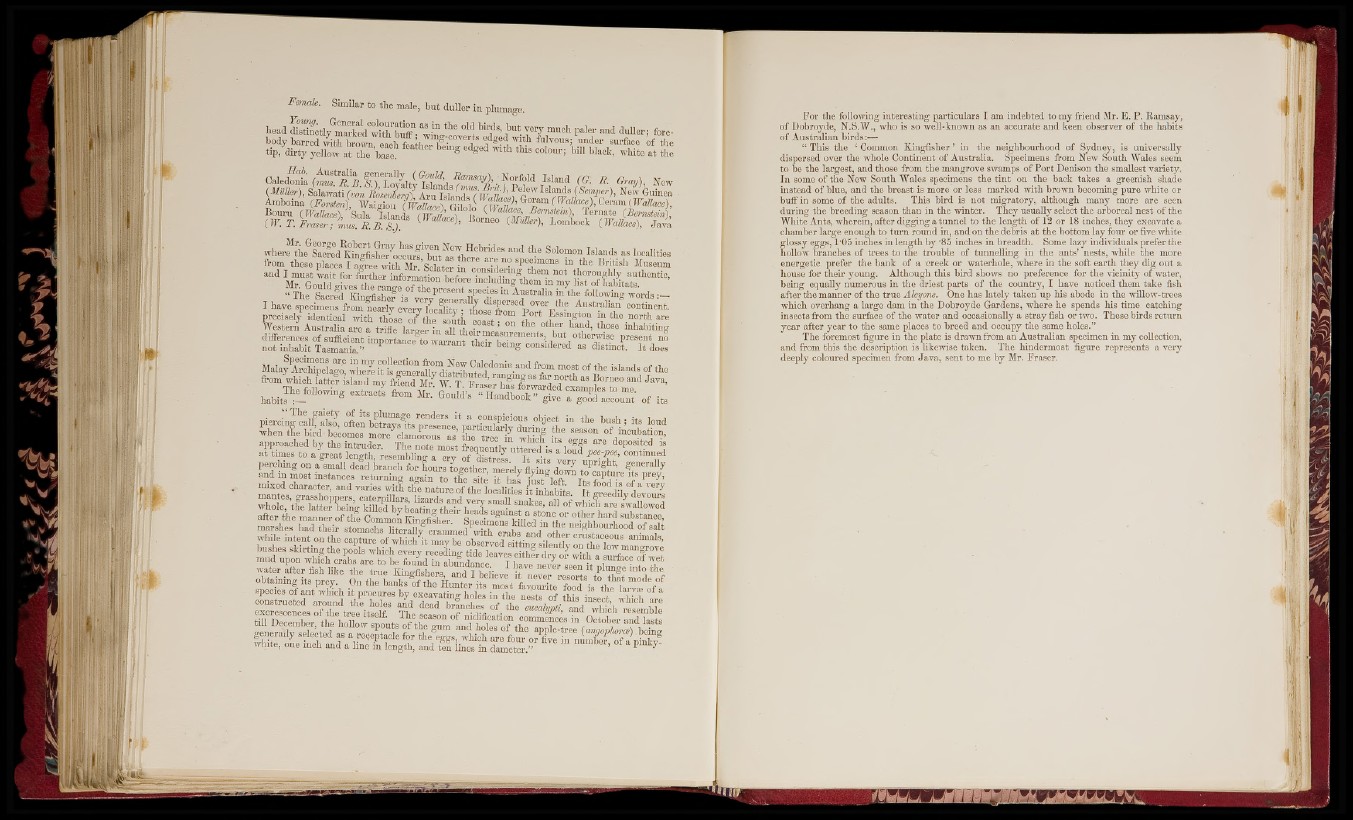
Similar to the male, b u t d u lle r in plumage,
head M / t l y ^ Z Y o l d burfe b u t v e ry much paler and d u lle r; fore-
Hah. A u stra lia
Caledonia {mus. R .B .
merally {Gould,
' ((?. R . Gx'mj), Netv
■5 ), 1 e fowIslands (Semper), New Guinea
wh er“ / e ^ Z S d Y t Z £ Y c 4 f b Y *"® f t ' “""® “®
from these places I aSree with J& S c k t f • -Tre uo specimens m tbe British Museum
“ T he S a c r e d Z i f i 'F ® ° *"® P®osent species in Au stralia in the following words :—
I h a re specimens f r o m / e L i | e / e r Y Z M i t !™ tY Y l r / r Y ° T ' 'F ‘"® '''"® ? “»™ continent.
..xxvre l u u iu C lam o ro u s a s tlie t
— - J «XX« xxxitoIttic i. Xlie n o te m o s t ire E Ì £ = H ; = S £ = £ s ^
Z " Z Z i“ ; T i e .“ ft® ™®‘ frequently n tte le d i f o l o i r / i / . ^ / T o / Z e ' d
'f distress. I t sits v e ry u p rig h t, generally
ilTl ne flj-.-»-« ire re -J____ '.
i S i i P i i i
F o r the folloiving in terestin g p articulars I am indebted to my friend ¡Mr. E . P . Ramsay,
o f Dobroyde, N.S.W., who is so well-known as an accurate and keen observer o f the habits
of Au stra lian b ird s:—
“ This the ‘ Common Kingfisher ’ in th e neighbourhood o f Sydney, is universally
dispersed over the whole Co ntinent o f Australia. Specimens from New South Wales seem
to be the largest, and those from the m angrove swamps o f P o rt Denison the smallest v ariety.
Ill some o f the New South Wales specimens the t in t on th e back takes a greenish shade
instead o f blue, and the b reast is more o r less marked with broAvii becoming pure Avhite or
buff in some o f the adults. This bird is n o t migratory, although many more a re seen
d u rin g th e breeding season th an in the winter. They usually select the arboreal n est o f the
W h ite A nts, wherein, after digging a tu n n el to the len g th o f 12 or 18 inches, they excavate a
chamber larg e enough to tu rn round in, and on the debris a t the bottom lay four o r five w hite
glossy eggs, T05 inches in len g th by ’85 inches in breadth. Some lazy individuals prefer the
hollow branches o f trees to the tro u b le o f tu nnelling in the an ts’ nests, while th e more
energetic prefer the bank o f a creek or waterhole, where in the soft e a rth th ey dig out a
house for th e ir young. Although this bird shows no preference for the vicinity o f w ater,
being equally numerous in th e driest p a rts o f th e country, I have noticed them take fish
after the manner o f th e tru e Alcyone. One has lately taken u p his abode in the willow-trees
Avhich overhang a larg e dam in the Dobroyde Gardens, where he spends his time catching
insects from the surface of the water and occasionally a stray fish or two. These b irds retu rn
y e a r after year to th e same places to breed and occupy the same holes.”
The foremost figure in th e plate is drawn from an Au stralian specimen in my collection,
and from th is the description is likewise taken. The hindermost figure represents a very
deeply coloured specimen from Jav a, sent to me by Mr. Fraser.